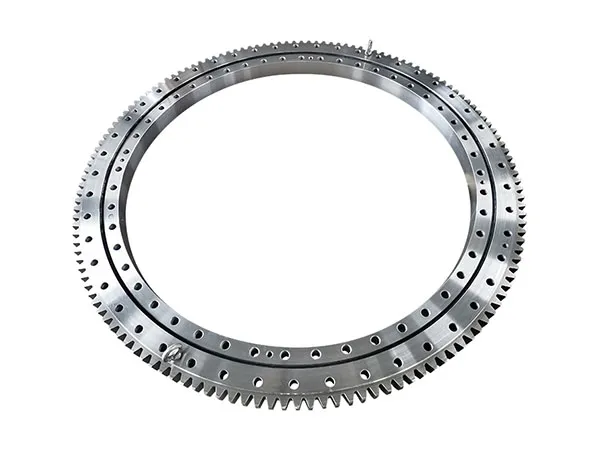Non-standard Мы все знаем, что независимо от того, какой подшипник are crucial components in various heavy machinery and precision equipment, разработан для обработки значительных осевых, радиальный, и нагрузки момента в высокоспециализированных приложениях. В отличие от стандартных подшипников, their customization process is intricate, involving close collaboration between the client and the manufacturer to meet unique operational demands.
Non-standard slewing bearing customization process

1. Initial Consultation and Requirement Gathering
The process begins with a comprehensive understanding of the client’s needs. This involves:
Application Analysis: Understanding the specific machine or system where the slewing bearing will be used. This includes factors like the type of equipment (краны, экскаваторы, ветряные турбины, медицинское оборудование, робототехника, п.), его операционная среда (морской пехотинец, высокая/низкая температура, пыльный, коррозийный), и общие требования к производительности.
Анализ нагрузки: Подробная информация о статических и динамических нагрузках, которые подшипник выдержит, в том числе осевые, радиальный, и переворачивание моментов нагрузки, а также ударные нагрузки и вибрация.
Размерные ограничения: Точные размеры монтажного пространства, в том числе внешний диаметр, размер отверстия, ширина, и любые конкретные конфигурации монтажного отверстия.
Спецификации производительности: Требуется скорость вращения, точность (допуски на развод), жесткость, Требования к крутящему моменту, and expected service life.
Environmental Factors: Воздействие влаги, saltwater, химикаты, пыль, экстремальные температуры, and the need for specialized sealing or corrosion protection.
Особые возможности: Any unique requirements such as integrated gearing (internal, external, helical, worm gears), lubrication systems, control devices, or monitoring systems.
Material Preferences: While manufacturers often recommend materials, clients may have specific preferences or requirements for certain alloys (например, high-strength steel, нержавеющая сталь, specialized alloys like 42CrMo4, 50Mn, or even aluminum for lightweight applications).
Compliance and Certifications: Any industry-specific standards (например, ИСО, AGMA, DEF STAN) or certifications required for the bearing.
2. Проектирование и проектирование
Once the requirements are thoroughly understood, the engineering team commences the design phase:
Концептуальный дизайн: Engineers develop initial concepts based on the gathered data, considering different slewing bearing types (например, Четырехточечные контактные шарики подшипники, crossed cylindrical roller bearings, triple-row roller bearings, combined roller/ball bearings) that best suit the application.
Detailed CAD Modeling: Using advanced 3D modeling software, a detailed design of the non-standard bearing is created. This includes precise geometries of the inner and outer rings, гоночные трассы, тела качения, cages/spacers, gearing, and sealing systems.
Выбор материала: Based on load, среда, and performance requirements, appropriate materials are selected for the rings, тела качения, и другие компоненты. This often involves specialized heat treatments to achieve desired hardness, износостойкость, and fatigue strength.
Structural Analysis (FEA): Finite Element Analysis (FEA) simulations are performed to validate the design’s integrity under various load conditions, predict stress distribution, deflection, and stiffness, and optimize the design for maximum performance and lifespan.
Lubrication System Design: Designing or recommending a suitable lubrication system (смазка или масло) и указание смазков на основе рабочих условий. Это включает в себя определение интервалов смазки и потенциал для передовых систем смазки.
…
Более подробную информацию о процессе настройки нестандартных подшипников можно найти, нажав на посещение:https://www.mcslewingbearings.com/a/news/slewing-bearing-customization-process.html


